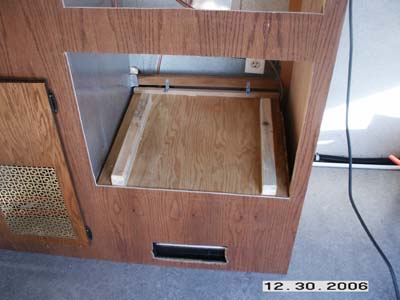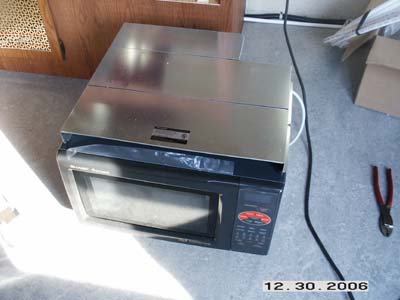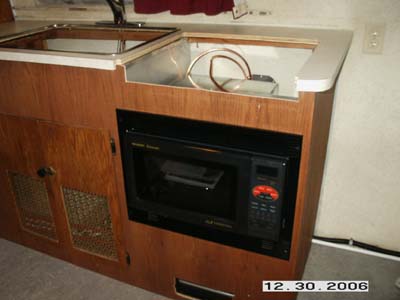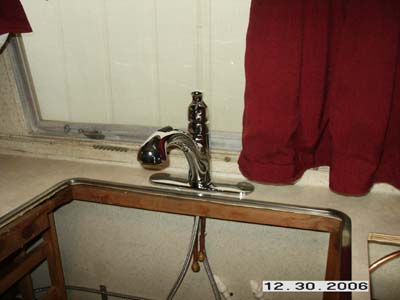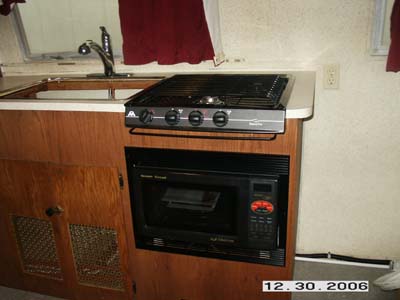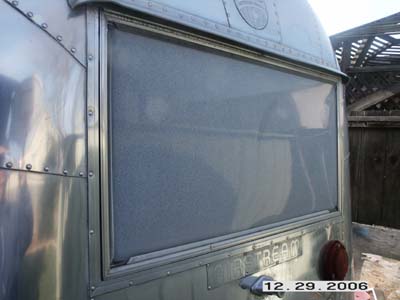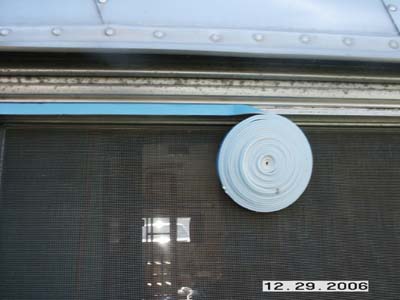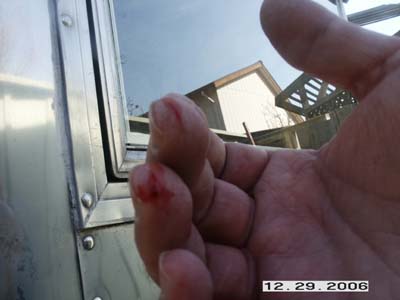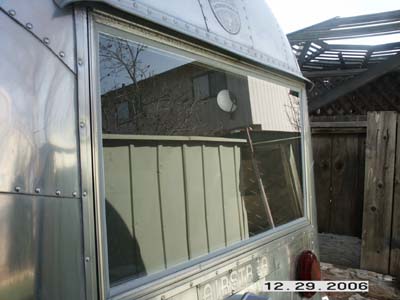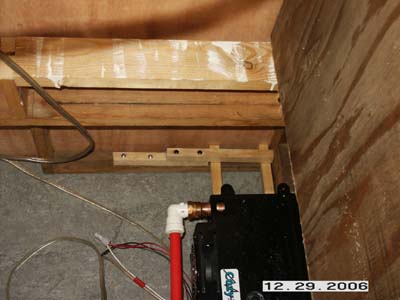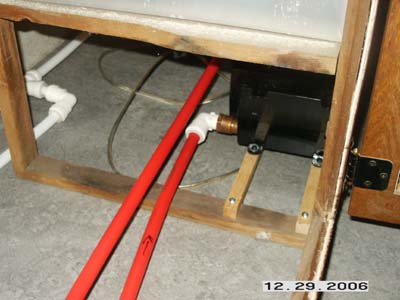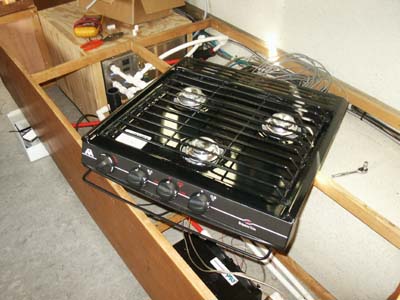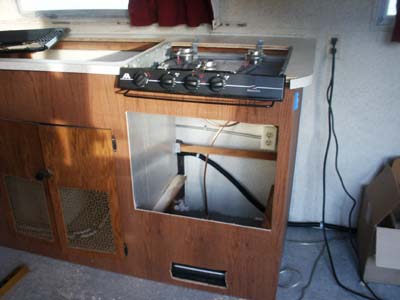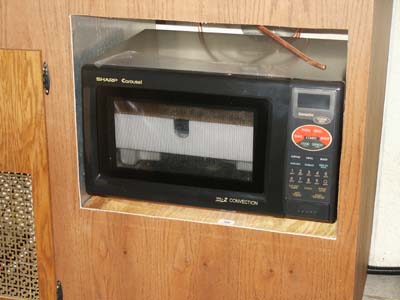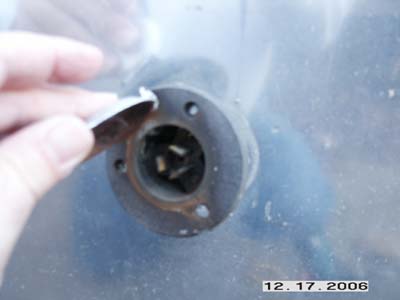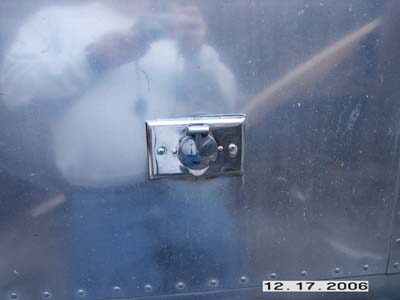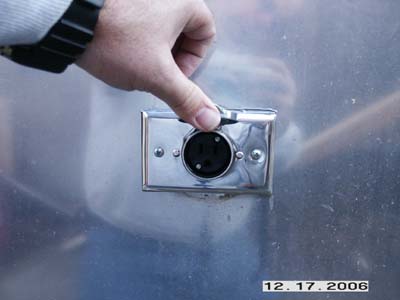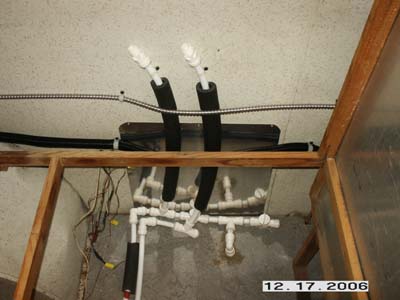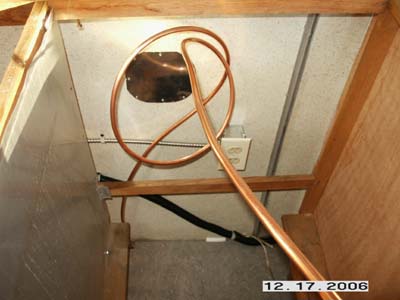Not enough time to work on the trailer lately. Lots of family and holiday stuff going on this time of year.
I did work on the battery system a little. My battery and fuse holder showed up from Best Converter. I went with a 12v 100 amp hour AGM battery. The AGM batteries can take a faster charge and are not required to be vented outside the trailer due to their make up.
First step was to find a suitable location for the fuse panel. I opted to install it on the lower closet wall so it can be accessed from the outside hatch or from the top under the bed. It’s only partially wired. I had run 10 gauge wire for some circuits but the fuse box is made for #12 (smaller wire), so I’ll probably run new lines.
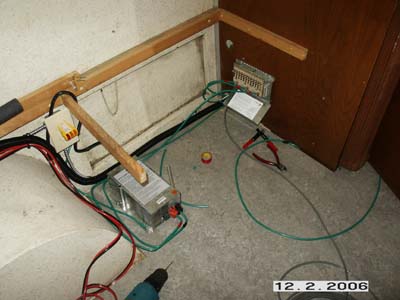
Part of the battery system is installing the Tri-Metric 20-20 provided by Best Coverter. The system comes with a ground shunt that is wired in to the battery so that it can measure how much power is being used. The shunt is good for 500 amps. Here is what it looks like.
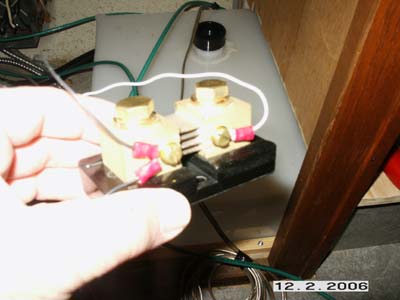
The battery ground and trailer grounds hook up to the large bolts on top. The small white and black wires are the sensor wires that feed info back to the Tri-Metric.
Here is a shot inside the curbside closet. The small box with two wires is a 50 amp resetable circuit braker. One of the two wires goes straight to the battery positve terminal, the other goes to one of the input lugs of the fuse panel.
Below that is the Tri-Metric ground shunt installed. The bottom wire goes to the battery negative. The top three go to the trailer chassis, the converter, and the trailer ground wiring. I’ll have to add at least one other ground wire to the shunt for the inverter I have to install.
Â
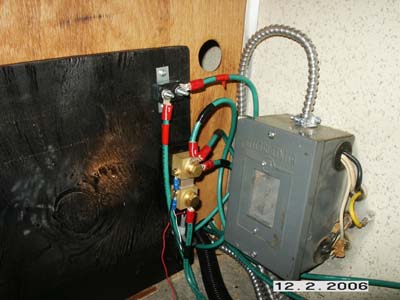
Here is the lifeline for any trailer. The battery.  These are about the best battery you can get for a trailer. They can even be mounted sideways if properly supported.
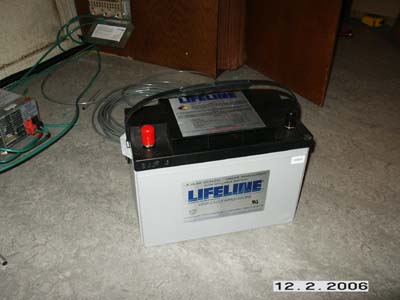
Of course, I’m not mounting it sideways ;-). I got a plastic battery box that has a hold down straping system to mount it to the floor. It fit just perfectly in the closet next to my black tank.
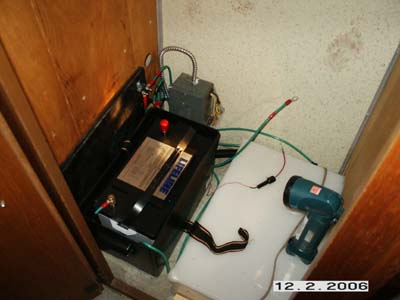
I just could not resist temporarily wiring in the Tri-Metric. I wanted to see what it would do. After wiring it up it read 12.9vdc. And 0 amps, thank goodness since there are no loads hooked to the system yet. 😉
Next I plugged in the WFCO 55Amp converter and the Tri-Metric showed 13.7vdc and +4.5 amps meaning the battery was getting a charge. If the amps were negative then power would be leaving the battery. The top red led is on and means the battery is charging.
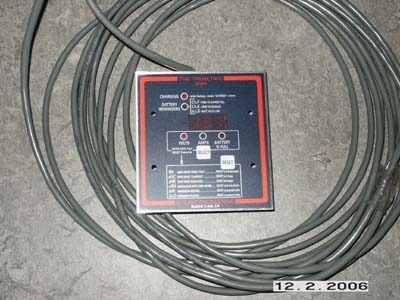
There is a whole lot more this Tri-Metric can do. Unfortunalty the manual was written by an engineer so its a nice learning curve. But once you get the Tri-Metric programed it can tell you how much power you have left in your batteries, so you can turn things off and conserve.




 by
by 
